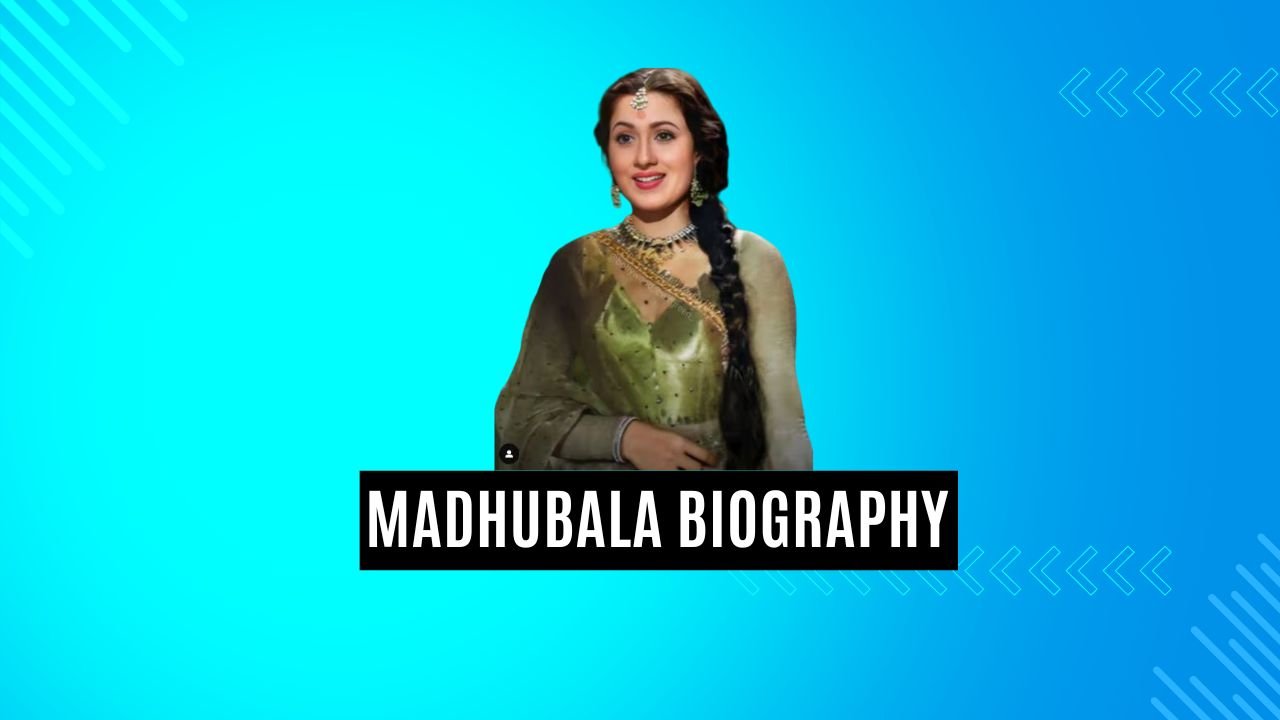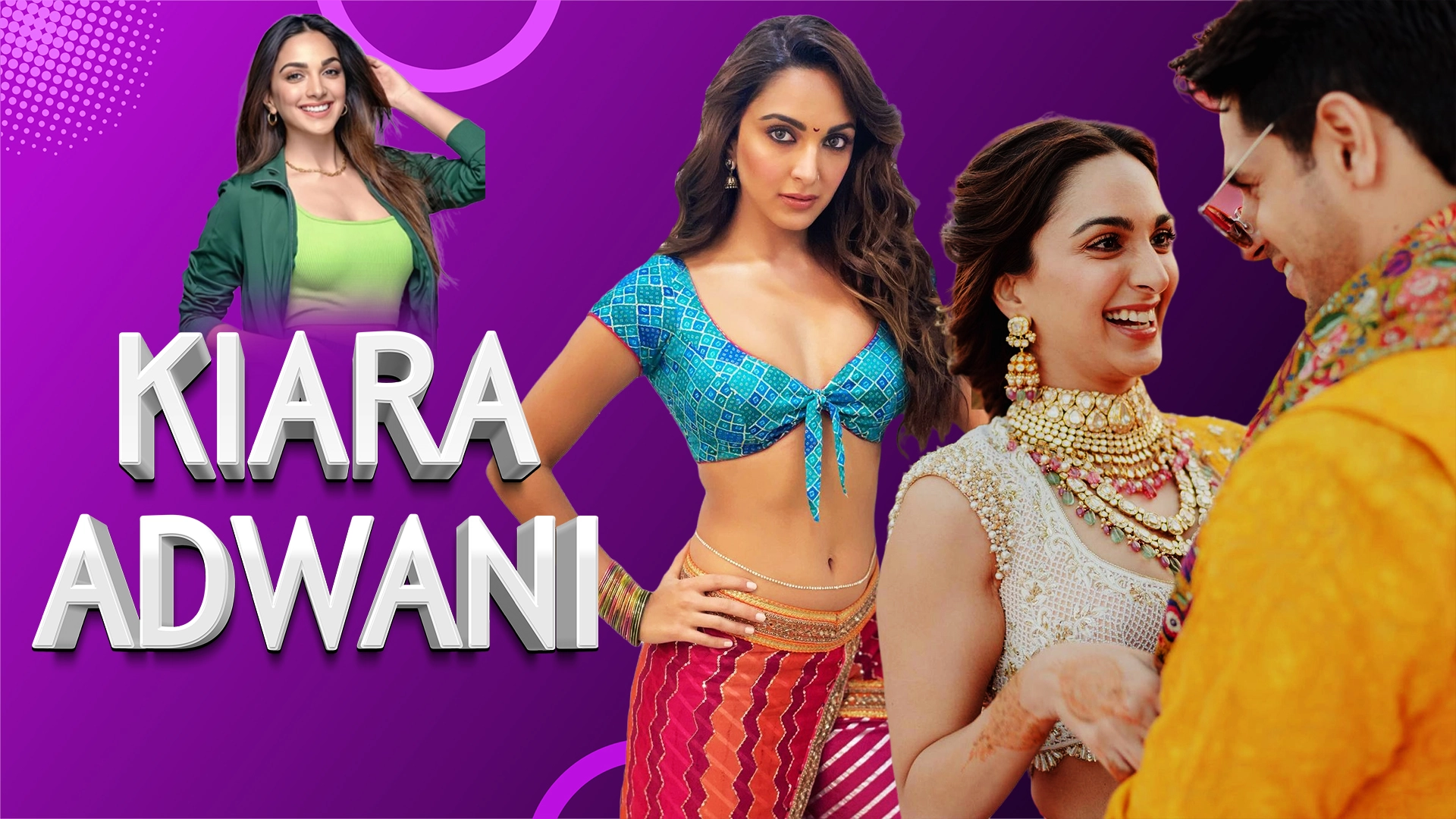Madhubala Biography: Madhubala, whose real name was Mumtaz Jehan Begum Dehlavi, remains an icon of beauty and talent in the history of Indian cinema. Born on February 14, 1933, in Delhi, India, she is often referred to as the “Venus of Indian Cinema” and the “Marilyn Monroe of Bollywood.” Her life was a fascinating journey marked by fame, love, tragedy, and an enduring legacy that continues to captivate audiences worldwide. This biography delves deep into Madhubala’s life, from her early years to her rise as a Bollywood superstar and her tragic demise.
Madhubala Biography
Early Life and Family Background
Madhubala’s journey into the world of cinema was far from predestined. She was born into a conservative Muslim family, which included her father, Ataullah Khan, and her mother, Ayesha Begum. Madhubala was the fifth of eleven siblings, with two sisters and eight brothers. Her birth name, Mumtaz Jehan Begum Dehlavi, was certainly not as glamorous as the one she would later adopt for her acting career.
Madhubala’s family hailed from Swabi, a city in present-day Pakistan. Her father, Ataullah Khan, was a retired army officer who had a passion for acting, which was unusual for someone of his background at the time. He encouraged his daughters to pursue acting, despite the conservative norms of their society.
Early Career and Discovery
Madhubala’s journey into the world of cinema began when she was just nine years old. Her father noticed her striking beauty and expressive eyes and decided to take her to Bombay (now Mumbai) to try her luck in the film industry. It was here that she was spotted by the legendary actor Devika Rani, who was also the co-founder of Bombay Talkies, one of India’s most prominent film studios at the time.
Devika Rani was captivated by Madhubala’s beauty and potential as an actress. She recommended that Madhubala take up acting and helped her secure a role in the film “Basant” (1942), directed by Amiya Chakravarty. This marked the beginning of Madhubala’s acting career, and she was only nine years old at the time.
Early Struggles and Transition to Adulthood
Madhubala’s early years in the film industry were not without challenges. She continued to work in small roles, often playing child characters in films like “Phoolwari” (1946) and “Rajputani” (1946). Her family struggled financially, and Madhubala’s earnings from films were vital for their survival.
As she entered her teenage years, Madhubala’s stunning beauty continued to attract attention. However, her family was protective, and she was often accompanied on set by her father or one of her brothers. Despite these challenges, her talent and potential were evident to those who worked with her.
Rise to Stardom
Madhubala’s breakthrough came with the film “Neel Kamal” (1947), in which she played the lead role opposite Raj Kapoor. She was only 14 years old at the time and made a significant impact with her performance. Her portrayal of a young woman suffering from leprosy earned her critical acclaim and established her as a promising actress in the industry.
Throughout the late 1940s and early 1950s, Madhubala’s career continued to ascend. She starred in several successful films, including “Mahal” (1949), “Dulari” (1949), and “Beqasoor” (1950). Her striking beauty and acting prowess made her a favorite among directors and audiences alike. She was often cast opposite leading actors of her time, including Dilip Kumar, Dev Anand, and Ashok Kumar.
Madhubala and Dilip Kumar: The Iconic Pair
One of the most memorable aspects of Madhubala’s career was her on-screen chemistry with the legendary actor Dilip Kumar. The two first appeared together in the film “Tarana” (1951), and their pairing became an instant hit. Their sizzling chemistry and remarkable performances in subsequent films like “Sangdil” (1952) and “Amar” (1954) solidified their status as one of Bollywood’s most iconic on-screen couples.
Off-screen, Madhubala and Dilip Kumar’s relationship became the talk of the town. Rumors of their romantic involvement were rife, and fans were eager to see their favorite on-screen couple become a real-life pair. However, despite their deep affection for each other, their relationship faced several hurdles, including family opposition, religious differences, and Dilip Kumar’s reservations about marriage due to his previous heartbreak.
The Love Story That Never Was
Madhubala’s love story with Dilip Kumar is one of the most enduring legends in the history of Bollywood. Their love was passionate and intense, but it was also marked by heartbreak and separation.
The primary obstacle to their union was Madhubala’s father, Ataullah Khan, who disapproved of their relationship due to religious differences. Madhubala’s family was Muslim, while Dilip Kumar was Hindu. Ataullah Khan was adamant that Madhubala could only marry Dilip Kumar if she converted to Hinduism, a decision that was not easy for her.
In 1953, Madhubala made the difficult choice to convert to Hinduism and took the name “Madhur Bhushan.” This was a significant step that demonstrated her commitment to her love for Dilip Kumar. However, despite her conversion, they faced further challenges in their relationship.
Dilip Kumar’s previous heartbreak with actress Kamini Kaushal had left him emotionally scarred, and he was hesitant to commit to another serious relationship. Additionally, the pressures of their demanding careers and the constant media attention took a toll on their love.
The Breakup and Its Aftermath
Despite their deep love for each other, Madhubala and Dilip Kumar’s relationship eventually crumbled under the weight of their differences and external pressures. The couple parted ways, leaving their fans heartbroken. Madhubala’s heartbreak was particularly evident, as she had sacrificed so much for their love, including her religious identity.
After the breakup, Madhubala faced a difficult period in her personal and professional life. She struggled to find solace and acceptance, both in her personal life and in the film industry. She continued to work in films and deliver remarkable performances, but the void left by her separation from Dilip Kumar was never truly filled.
Career Highs and Iconic Films
Despite the personal challenges she faced, Madhubala’s career reached its zenith during the 1950s. She starred in a string of successful films that showcased her versatility as an actress.
- “Mughal-e-Azam” (1960): This historical epic is arguably Madhubala’s most iconic film. She played the role of Anarkali, a courtesan who falls in love with the Mughal prince Salim, played by Dilip Kumar. The film, known for its grandeur and opulent sets, became a massive success and is considered a classic of Indian cinema. Madhubala’s performance as Anarkali is often hailed as one of the greatest in Bollywood history.
- “Chalti Ka Naam Gaadi” (1958): In this comedy film, Madhubala starred alongside her real-life husband Kishore Kumar and his brothers Ashok Kumar and Anoop Kumar. The film was a delightful comedy that showcased Madhubala’s flair for comic timing and her ability to shine in diverse roles.
- “Barsaat Ki Raat” (1960): Madhubala’s portrayal of a strong-willed woman in this romantic drama earned her critical acclaim. The film, directed by P. L. Santoshi, is remembered for its melodious music and memorable performances.
- “Howrah Bridge” (1958): Madhubala played the role of a cabaret dancer in this film, displaying her versatility as an actress. The song “Aaiye Meherbaan” from the movie became an iconic musical number and is still celebrated for Madhubala’s graceful dance.
Personal Life and Marriage
While Madhubala’s professional life was flourishing, her personal life continued to be marked by tumultuous relationships. After her breakup with Dilip Kumar, she found solace in the company of musician and playback singer Kishore Kumar. They fell in love and decided to get married, despite the opposition of both their families.
Madhubala and Kishore Kumar tied the knot on October 9, 1960. Their marriage was characterized by Kishore Kumar’s eccentric personality and his dedication to his career. He was known for his humorous and quirky nature, which often brought joy to Madhubala’s life. However, their marriage also faced challenges, including financial difficulties and Kishore Kumar’s demanding work schedule.
Health Issues and the Struggle with Illness
Madhubala’s life took a tragic turn when she was diagnosed with a serious heart condition known as ventricular septal defect (VSD). This condition, often present since birth, involves a hole in the wall separating the two lower chambers of the heart. Despite her health issues, Madhubala continued to act in films, driven by her passion for acting and her family’s financial needs.
Her declining health took a toll on her physically, and she often struggled to complete her film commitments. Yet, her dedication to her craft remained undiminished, and she continued to deliver memorable performances in films like “Mughal-e-Azam” (1960), even as her health deteriorated.
Tragic Demise
Madhubala’s health deteriorated rapidly, and her condition became critical. She had to undergo multiple surgeries in an attempt to treat her heart condition, but her condition continued to worsen. The toll of her illness on her body was visible, and her once-legendary beauty began to fade.
Despite her struggles, Madhubala never lost her spirit and remained positive. She continued to work in films, although her roles became increasingly limited due to her health. Her last film appearance was in the film “Jwala” (1971).
Madhubala’s tragic demise came on February 23, 1969, when she was only 36 years old. Her untimely death left a void in the hearts of her fans, and the entire film industry mourned the loss of one of its brightest stars.
Legacy and Influence
Madhubala’s legacy is indelible and continues to shine brightly in the world of Indian cinema. She left behind a body of work that showcased her exceptional talent as an actress, from her early days as a child artist to her iconic roles as a leading lady. Her timeless beauty, magnetic presence, and ability to emote on screen made her an unparalleled star.
Her performance as Anarkali in “Mughal-e-Azam” (1960) remains one of the most celebrated in the history of Indian cinema. The film’s enduring popularity ensures that Madhubala’s name lives on, with each new generation of cinephiles discovering her brilliance.
Madhubala’s personal life, marked by her love for Dilip Kumar and her marriage to Kishore Kumar, has been a subject of fascination for fans and biographers alike. Her story serves as a reminder of the price that some artists pay for their passion and dedication to their craft.
Over the years, Madhubala has received numerous posthumous accolades and honors, including the prestigious Dadasaheb Phalke Award in 2020. Her image and iconic poses continue to be featured in popular culture, fashion, and art, cementing her status as a timeless icon.
Conclusion
Madhubala’s life was a remarkable journey from humble beginnings to becoming one of Bollywood’s most beloved and enduring stars. Her beauty, talent, and charisma continue to captivate audiences decades after her passing. While her personal life was marked by heartbreak and health struggles, her contributions to Indian cinema remain an inspiration to aspiring actors and a testament to the power of talent and perseverance.
Madhubala’s story is a reminder that the world of show business can be as cruel as it is glamorous, and that fame often comes at a great personal cost. Yet, her legacy endures, and her name continues to be synonymous with beauty, grace, and timeless elegance. Madhubala, the eternal beauty of Bollywood, will forever be remembered as an icon who left an indelible mark on the history of Indian cinema.



